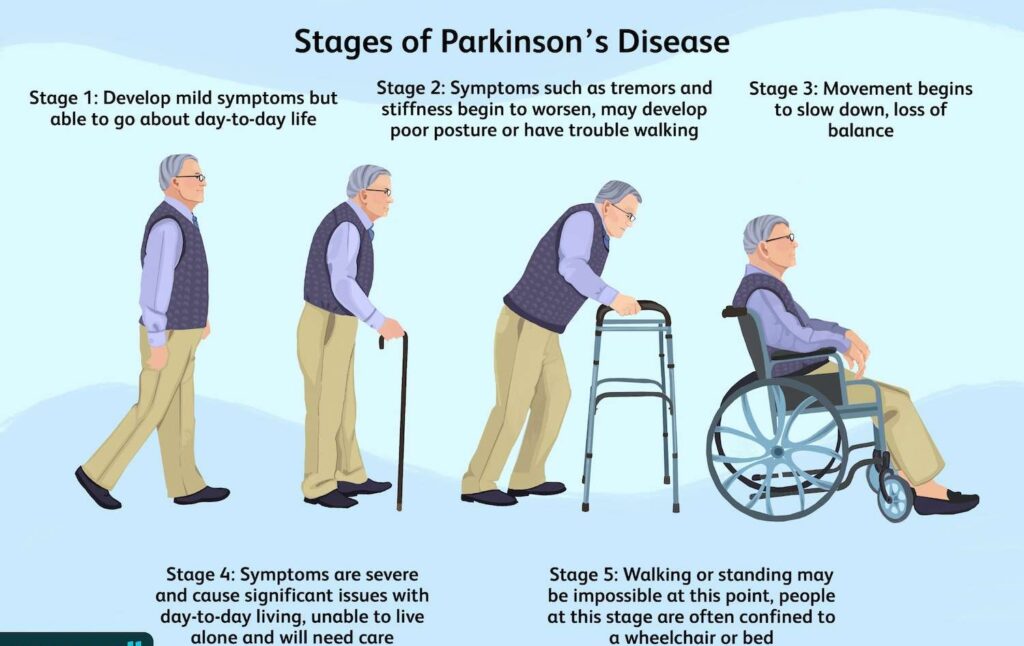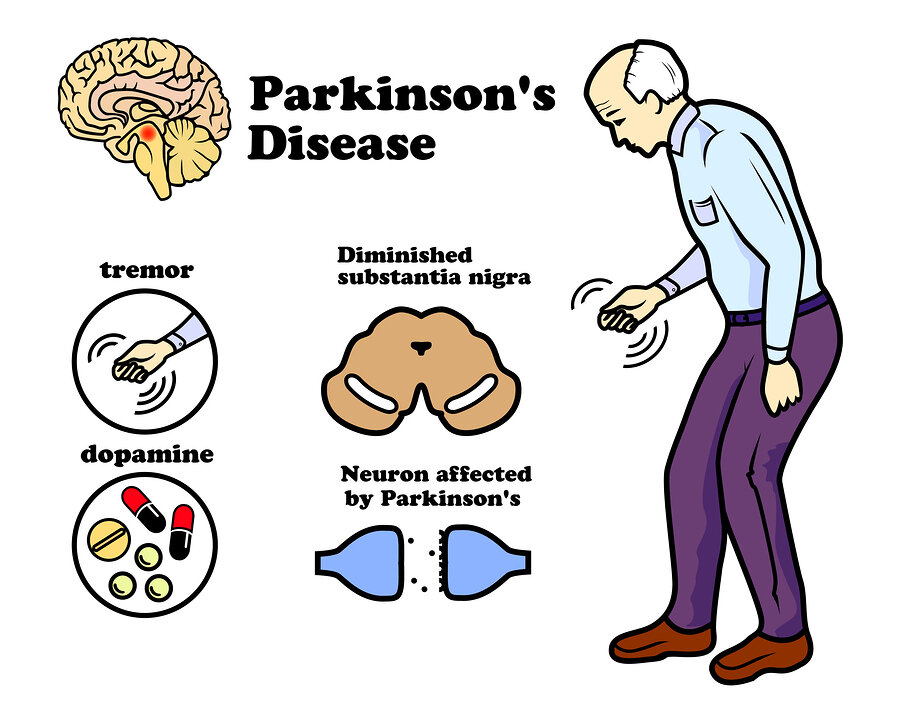Parkinson’s Disease (PD) is a progressive neurological disorder that predominantly affects the motor system, leading to symptoms such as tremors, rigidity, and bradykinesia (slowness of movement). While the physical aspects of the disease are often highlighted, the financial implications can be equally debilitating for patients and their families. This article aims to explore the various financial burdens associated with Parkinson’s Disease and provide actionable advice on managing these costs effectively. Understanding the scope of these expenses and planning can make a significant difference in the lives of those affected.
Understanding Parkinson’s Disease
Parkinson’s Disease affects an estimated 7 to 10 million people worldwide, with the incidence increasing with age. It is caused by the loss of dopamine-producing cells in the brain, which leads to the symptoms most commonly associated with the disease. There is currently no cure for Parkinson’s, which means managing the disease is a lifelong process that can accumulate substantial costs over time.
The Prevalence and Impact of Parkinson’s Disease
The growing prevalence of Parkinson’s globally implies that its financial impact is not just a personal concern but a societal one. With populations aging worldwide, the economic burden of Parkinson’s is expected to increase, affecting healthcare systems and economies.
Direct Costs Associated with Parkinson’s Disease
The direct costs include all medical-related expenses required to manage the condition. These can vary significantly depending on the progression of the disease and the healthcare services available in the patient’s location.
Medical Treatments and Medications
Medication remains the cornerstone of Parkinson’s management, aiming to control symptoms and improve quality of life. However, the costs of these medications can be high, especially as the disease progresses and dosages need to be increased or combined with other treatments.
Regular Medical Check-ups and Tests
Regular consultations with neurologists, along with a battery of tests to monitor the disease’s progression, are crucial. These appointments can be a significant part of the financial burden, especially if specialist care is required.
Specialist Care and Rehabilitation
As PD progresses, there may be a need for physical therapy, occupational therapy, and speech therapy. The costs for these specialist services can add up quickly, especially if they are needed regularly over a long period.
Indirect Costs and Lifestyle Changes
Parkinson’s Disease often necessitates changes in lifestyle, which can have indirect financial implications, including home modifications or even relocation to more suitable living arrangements.
Modifications Needed in Daily Life
Simple tasks can become challenging as Parkinson’s progresses, leading to necessary home modifications like stairlifts, modified bathrooms, and other aids that can be costly.
Long-term Care Solutions
For some individuals, in-home care or moving to an assisted living facility may become necessary, which represents a significant long-term cost.
Impact on Employment and Earnings
Parkinson’s can significantly impact a person’s ability to work, leading to reduced income and early retirement. This can strain family finances and reduce the patient’s and their family’s overall financial stability.
Financial Planning Strategies
Effective financial planning is essential to manage the costs associated with Parkinson’s Disease. This involves a comprehensive approach to budgeting, insurance, and exploring available resources.
Creating a Long-Term Financial Plan
Creating a detailed financial plan can help manage ongoing costs and prepare for future expenses. This should include budgeting for medical expenses, daily living costs, and potential long-term care.
Understanding Insurance and Benefits
Health insurance can help offset some of the costs associated with Parkinson’s Disease. Understanding the coverage options available, including private insurance, Medicare, and Medicaid, is crucial.
Resources for Financial Aid
Numerous organisations offer financial assistance for those affected by Parkinson’s. Researching and accessing these resources can provide much-needed support for managing expenses.

Support Systems and Community Resources
Community resources and support systems can provide both financial and emotional support to those affected by Parkinson’s Disease. These resources can be invaluable in managing the disease.
Local and Online Support Groups
Support groups, both local and online, can offer advice, share experiences, and provide emotional support. These groups can also be a source of information on financial assistance programs.
Government and Non-Profit Assistance Programs
Government programs and non-profit organisations often provide financial aid and other resources to help manage the costs associated with Parkinson’s Disease.
Navigating Legal and Social Benefits
Understanding legal rights and social benefits can help ease some of the financial burdens of Parkinson’s Disease. Accessing these benefits requires navigating complex systems, but the effort can result in significant support.
Disability Rights and Accommodations
Knowing your rights regarding disability accommodations at work and in public spaces can help ensure you receive the necessary support and reduce financial strain.
Legal Advice for Patients and Families
Seeking legal advice can help families navigate the complexities of benefits, insurance, and long-term planning, ensuring that they are fully supported.
Personal Stories and Case Studies
Real-life stories and case studies can provide valuable insights into how others manage the financial impact of Parkinson’s Disease. These stories can offer practical advice and emotional support.
Experiences from Individuals
Hearing from individuals who have navigated the financial challenges of Parkinson’s can provide practical tips and inspiration for managing your own situation.
How Families Cope Financially
Learning how other families cope with the financial impact of Parkinson’s can provide strategies and support for managing your own finances.
Technological Advancements and Their Financial Implications
Technological advancements can help manage Parkinson’s Disease more effectively, but they also come with their own costs. Evaluating the cost-benefit of these technologies is essential.
Assistive Technologies
Assistive technologies, such as mobility aids and communication devices, can significantly improve the quality of life for those with Parkinson’s. However, the costs of these technologies can add up.
Cost vs. Benefit Analysis of New Technologies
Conducting a cost-benefit analysis of new technologies can help determine which investments are worthwhile and which might not be necessary.

Conclusion
Managing the financial impact of Parkinson’s Disease requires careful planning, knowledge of available resources, and support from the community. By understanding the costs involved and seeking appropriate support, patients and their families can better navigate the challenges posed by this condition.
Frequently Asked Questions?
Q1: What are the primary financial challenges of Parkinson’s Disease?
The primary financial challenges include the costs of medications, regular medical check-ups, specialist care, and necessary home modifications.
Q2: How can I plan for the long-term financial impact of Parkinson’s Disease?
Creating a detailed financial plan that includes budgeting for medical expenses, daily living costs, and potential long-term care is essential.
Q3: Are there any financial aid programs available for Parkinson’s patients?
Yes, numerous organisations offer financial assistance, including government programs and non-profit organisations.
Q4: How can insurance help manage the costs of Parkinson’s Disease?
Health insurance can help offset some costs. Understanding coverage options, including private insurance, Medicare, and Medicaid.
Q5: What modifications might be necessary at home for someone with Parkinson’s?
Home modifications can include installing stairlifts, modifying bathrooms, and adding other aids to assist with daily tasks.
Q6: How can community resources help manage Parkinson’s Disease?
Community resources, including local and online support groups, can provide financial and emotional support.
Q7: What legal rights do Parkinson’s patients have regarding employment?
Parkinson’s patients have disability rights that require employers to provide reasonable accommodations to help them continue working.